
Deutsch-Chinesische Enzyklopädie, 德汉百科
 Olympische Sommerspiele
Olympische Sommerspiele
 Brasilien
Brasilien
 FIFA Fussball-Weltmeisterschaft 2014
FIFA Fussball-Weltmeisterschaft 2014
 Olympische Sommerspiele
Olympische Sommerspiele
 Rio de Janeiro
Rio de Janeiro
 Seidenstraße
Seidenstraße

 Wichtiger Hafen
Wichtiger Hafen

里约热内卢位于巴西国土的东南部,坐落在美丽的瓜纳巴拉海湾,依山傍水,风景优美,是巴西和世界著名的旅游观光胜地。面积4.36万平方公里。人口 1,413.3万(1990),城市人口占90%以上。1889年设州,1975年瓜纳巴拉州并入,首府由尼泰罗伊迁至里约热内卢市。沿海低地气候湿热, 内地高原气候温和。重要河流有帕拉伊巴河等。工农业和服务业均甚发达,服务业占就业人口约37%和收入的一半。工业以钢铁、纺织、食品、印刷、石油化工为 主。有石油、铝土、铁、煤、大理石等矿产。渔业和盐业兴盛。农业主产甘蔗、柑橘、香蕉、蔬菜、棉花、水果、稻,饲养牲畜。水、陆、空交通发达。风景优美, 多游览胜地。
(Quelle: http://www.uutuu.com)
里约热内卢(葡萄牙语:Rio de Janeiro,葡萄牙语发音:[ˈʁi.u dʒi ʒɐˈnejɾu],意即“一月的河”),有时仅简称为里约(Rio),是位于巴西东南部的城市,为里约热内卢州首府,同时是巴西第二大城,仅次于圣保罗。面积1,256平方公里,人口6,094,183人(2005年)。其自1822年巴西建国以来一直为首都,至1960年4月21日迁都巴西利亚为止,更曾经成为前宗主国葡萄牙在本土被拿破仑入侵时(1808年–1821年)的流亡首都[3]。风景优美,每年吸引大量游客到此观光,市内的里约热内卢港是世界三大天然良港之一,而里约热内卢基督像也是世界新七大奇迹之一。其亦为第31届夏季奥运的主办地,是第一座举办夏季奥运的南美洲城市。
Rio de Janeiro [ˈʁi.u d(ʒi) ʒɐˈne(j)ɾu, ˈʁi.u d(ʑi) ʑɐˈne(j)ɾu] ist nach São Paulo die zweitgrößte Stadt Brasiliens und Hauptstadt des gleichnamigen Bundesstaates. Sie liegt an der Guanabara-Bucht im Südosten des Landes. Der Name (deutsch Fluss des Januar) beruht auf einem Irrtum des Seefahrers Gaspar de Lemos, der die Bucht am 1. Januar 1502 entdeckte und für die Mündung eines großen Flusses hielt. Im administrativen Stadtgebiet leben rund 6,7 Millionen Menschen (Schätzung 2018).[1] Die Metropolregion Rio de Janeiro hat rund 13,3 Millionen Einwohner (Schätzung 2018).[2] Somit gehört Rio de Janeiro zu den Megastädten dieser Erde.
Von 1815 bis 1821 war Rio de Janeiro Hauptstadt des Königreiches von Portugal und Brasilien und nach der Unabhängigkeit Brasiliens 1822 bis 1960 die Hauptstadt des Landes. Danach trat sie diese Funktion an Brasília ab, bleibt aber nach São Paulo bedeutendstes Handels- und Finanzzentrum des Landes. Von 1808 bis 1822 war die Stadt auch Sitz des portugiesischen Hofes, der wegen eines Angriffs durch Napoleon Bonaparte nach Brasilien flüchten musste. Die Bewohner der Stadt nennt man Cariocas, nach einem Wort aus der zum Tupí-Guaraní gehörenden Sprache der Tupinambá, welches „Hütte des weißen Mannes“ bedeutet.
Wahrzeichen von Rio de Janeiro sind der Zuckerhut, die 38 Meter hohe Christusfigur auf dem Gipfel des Corcovados und der Strand des Stadtteils Copacabana, der als einer der berühmtesten der Welt gilt. Die Stadt ist auch bekannt wegen des jährlich stattfindenden Karnevals von Rio. Die bunte Parade der Sambaschulen gehört zu den größten Paraden der Welt.
リオ・デ・ジャネイロ(葡: Rio de Janeiro, ブラジルポルトガル語発音: ヒウ・ヂ・ジャネイル)は、ブラジル南東部に位置するリオデジャネイロ州の州都。世界有数のメガシティであり、国内最大の観光都市である。港湾都市としても知られる。
人口は600万人を超え、サンパウロに次いでブラジル第2位にランクされる。経済規模(域内総生産)でもサンパウロに次いで第2位にあり、アメリカのシンクタンクが公表したビジネス・人材・文化・政治などを対象とした総合的な世界都市ランキングにおいて、世界第56位、国内ではサンパウロに次ぐ第2位の都市と評価された[1]。都市周辺の美しい文化的景観は「リオデジャネイロ:山と海との間のカリオカの景観群」として、2012年に世界遺産リストに登録された。2016年の第31回夏季オリンピックの開催都市である。
カーニバルで有名。コパカバーナ、イパネマ(英語版)などの世界的に有名な海岸を有し世界3大美港の一つに数えられる美しい都市である。都市のGDPは2010億ドルであり世界第30位、南米ではサンパウロ、ブエノスアイレスに次ぎ第3位である[2]。
1960年にブラジリアに遷都するまではブラジルの首都であった。また、1808年にナポレオンに本国領土を奪われたポルトガル王室が遷都してからブラジルが独立するまではポルトガルの首都であった。また、中南米有数の貿易港でもあるためにブラジルの経済的な中心地でもあった。近年は経済の中心地はサンパウロに移り、その地位が低下しているものの、依然として中南米有数の経済都市である。また、ブラジルのみならず世界でも有数の観光地としても、ショーロ、ボサノヴァを生んだ音楽の都としても名高い。
Rio de Janeiro (/ˈriːoʊ di ʒəˈnɛəroʊ, - deɪ -, - də -/; Portuguese: [ˈʁi.u d(ʒi) ʒɐˈne(j)ɾu];[3] River of January), or simply Rio,[4] is anchor to the Rio de Janeiro metropolitan area and the second-most populous municipality in Brazil and the sixth-most populous in the Americas. Rio de Janeiro is the capital of the state of Rio de Janeiro, Brazil's third-most populous state. Part of the city has been designated as a World Heritage Site, named "Rio de Janeiro: Carioca Landscapes between the Mountain and the Sea", by UNESCO on 1 July 2012 as a Cultural Landscape.[5]
Founded in 1565 by the Portuguese, the city was initially the seat of the Captaincy of Rio de Janeiro, a domain of the Portuguese Empire. Later, in 1763, it became the capital of the State of Brazil, a state of the Portuguese Empire. In 1808, when the Portuguese Royal Court transferred itself from Portugal to Brazil, Rio de Janeiro became the chosen seat of the court of Queen Maria I of Portugal, who subsequently, in 1815, under the leadership of her son, the Prince Regent, and future King João VI of Portugal, raised Brazil to the dignity of a kingdom, within the United Kingdom of Portugal, Brazil, and Algarves. Rio stayed the capital of the pluricontinental Lusitanian monarchy until 1822, when the War of Brazilian Independence began. This is one of the few instances in history that the capital of a colonising country officially shifted to a city in one of its colonies. Rio de Janeiro subsequently served as the capital of the independent monarchy, the Empire of Brazil, until 1889, and then the capital of a republican Brazil until 1960 when the capital was transferred to Brasília.
Rio de Janeiro has the second largest municipal GDP in the country,[6] and 30th largest in the world in 2008,[7] estimated at about R$343 billion (IBGE, 2008) (nearly US$201 billion). It is headquarters to Brazilian oil, mining, and telecommunications companies, including two of the country's major corporations – Petrobras and Vale – and Latin America's largest telemedia conglomerate, Grupo Globo. The home of many universities and institutes, it is the second-largest center of research and development in Brazil, accounting for 17% of national scientific output according to 2005 data.[8] Despite the high perception of crime, the city has a lower incidence of crime than Northeast Brazil, but it is far more criminalized than the south region of Brazil, which is considered the safest in the country.[9]
Rio de Janeiro is one of the most visited cities in the Southern Hemisphere and is known for its natural settings, Carnival, samba, bossa nova, and balneario beaches[10] such as Barra da Tijuca, Copacabana, Ipanema, and Leblon. In addition to the beaches, some of the most famous landmarks include the giant statue of Christ the Redeemer atop Corcovado mountain, named one of the New Seven Wonders of the World; Sugarloaf Mountain with its cable car; the Sambódromo (Sambadrome), a permanent grandstand-lined parade avenue which is used during Carnival; and Maracanã Stadium, one of the world's largest football stadiums. Rio de Janeiro was the host of the 2016 Summer Olympics and the 2016 Summer Paralympics, making the city the first South American and Portuguese-speaking city to ever host the events, and the third time the Olympics were held in a Southern Hemisphere city.[11] The Maracanã Stadium held the finals of the 1950 and 2014 FIFA World Cups, the 2013 FIFA Confederations Cup, and the XV Pan American Games.
Rio de Janeiro [ˈʁi.u d(ʒi) ʒɐˈnejɾu]2, souvent désignée simplement sous le nom de Rio, est la deuxième plus grande ville du Brésil après São Paulo. Située au sud-est du pays, elle est la capitale de l'État de Rio de Janeiro. Avec ses 6,1 millions d'habitants intra-muros (communément appelés Cariocas, la variante Carioques existant aussi en français) et 12,62 millions dans l'aire urbaine, Rio de Janeiro est l'une des métropoles les plus importantes du continent américain.
Elle est mondialement connue pour son carnaval, ses plages (Copacabana, Leblon et Ipanema) ainsi que sa statue du Christ Rédempteur au sommet du Corcovado. Elle fut capitale du Royaume-Uni de Portugal, du Brésil et des Algarves, à la suite de la fuite de la cour portugaise lors de l'invasion des troupes napoléoniennes (1808-1821), puis de l'Empire du Brésil (1822-1889), de la República Velha (1889-1930), de l’Estado Novo (1937-1945) et du début de la Deuxième République jusqu'en 1960.
La ville a accueilli les Journées mondiales de la jeunesse 2013, la finale de la Coupe du monde de football de 2014 et enfin, en 2016, les Jeux olympiques d'été.
Rio de Janeiro (pron. [ˈrio deʒaˈnɛiro];[2] letteralmente "Fiume di gennaio" in portoghese) è una città del Brasile, capitale dell'omonimo stato confederato. Rio è la seconda città del Brasile dopo San Paolo e fu la capitale dello Stato federale dal 1763 fino al 1960, dopo Salvador da Bahia e prima di Brasilia.
La città è famosa per le sue attrattive turistiche tra cui spiccano le spiagge di Copacabana e Ipanema, la gigantesca statua liberty del Cristo Redentore, situata sul monte del Corcovado, il monte del Pão de Açúcar (Pan di Zucchero), con la sua funivia, e il suo annuale carnevale, il più celebre al mondo.
La città è al centro della scena internazionale, avendo ospitato alcuni dei più grandi eventi mondiali degli ultimi anni: nel 2007 i XV Giochi Panamericani, nel 2013 la XXVIII Giornata Mondiale della Gioventù e nel 2016 i giochi della XXXI Olimpiade. È stata inoltre una delle città in cui si è disputato il Campionato del mondo di calcio 2014.
Rio de Janeiro contiene anche la più grande foresta all'interno di un'area urbana, la foresta di Tijuca.
L'attuale sindaco è Marcelo Crivella, in carica dal 1º gennaio 2017, del PRB.
Río de Janeiro1 (en portugués, Rio de Janeiro, AFI: [ˈʁi.u dʒi ʒaˈnejɾu]), fundada como São Sebastião do Rio de Janeiro,3 es una ciudad, municipio brasileño y capital del estado homónimo, ubicada en el sureste del país. Es la segunda ciudad más poblada del país después de São Paulo.4
Fue la capital del Reino de Portugal entre 1808 y 1822 y la capital del Imperio del Brasil desde 1822, cuando la nación declaró su independencia del país luso y conservó ese rango hasta la inauguración de Brasilia, en 1960.
Es uno de los principales centros económicos, de recursos culturales y financieros del Brasil. Es conocida internacionalmente por sus iconos culturales y paisajes, como el Pan de Azúcar, la estatua del Cristo Redentor (una de las siete maravillas del mundo moderno), las playas de Copacabana e Ipanema, el Estadio de Maracaná, el Parque Nacional de Tijuca (el mayor bosque urbano del mundo), la Quinta da Boa Vista, la isla de Paquetá, las Fiestas de Fin de Año en Copacabana y la celebración del Carnaval
Representa el segundo mayor PIB en el país y 30.º mayor del mundo, además de ser sede de dos de las más importantes empresas brasileñas —Petrobras y Vale do Rio Doce, ahora privatizada— y las principales empresas de petróleo y la telefonía, así como del mayor conglomerado de compañías de medios y comunicaciones de Latinoamérica.[cita requerida] Es el segundo centro más grande de investigación y desarrollo en Brasil, alcanzando el 17% de la producción científica nacional (según datos de 2005).
Río de Janeiro es considerada una ciudad global Beta- por el inventario de 2008 de la Universidad de Loughborough (GaWC).5
Es conocida mundialmente como la "Ciudad Maravillosa" (Cidade Maravilhosa), en portugués, albergó la Copa Mundial de Fútbol de 1950, la Copa Confederaciones 2013, la Jornada Mundial de la Juventud 2013, la Copa Mundial de Fútbol de 2014 y los Juegos Olímpicos de Río de Janeiro 2016.
Ри́о-де-Жане́йро, или, сокращённо, Рио (порт. Rio de Janeiro, буквально — январская река) — город в Бразилии, административный центр одноимённого штата.
Население — 6,4 млн человек (2014), это второй по величине город страны и четвёртый Южной Америки. Образует агломерацию с населением 12 млн человек (2011 год)[6]. Крупный финансовый центр и морской порт на континенте, научный центр.
Расположен на берегу залива Гуанабара Атлантического океана, на узкой равнине, зажатой с двух сторон горами и морем. Климат тропический[1][2]. Местность открыта португальским мореплавателем Гашпаром ди Лемушем, принявшим залив Гуанабара за реку, которую назвали Январской рекой[уточнить]. В 1531 году основан португальский форт Сан-Себастьян де-Рио-де-Жанейро. С 1763 — столица вице-королевства Бразилии, с 1822 года — столица независимой Бразильской империи, в 1889—1960 годы — столица республики Соединённых штатов Бразилии.
Исторический центр с постройками XVI—XIX веков. Побережье вместе с пляжем Копакабана, горой Сахарная Голова и статуей Христа внесено в список Всемирного наследия ЮНЕСКО[7].


 Architektur
Architektur
 Eurovision Song Contest,ESC
Eurovision Song Contest,ESC
 FIFA Fussball-Weltmeisterschaft 1990
FIFA Fussball-Weltmeisterschaft 1990
 Fußball-Europameisterschaft 2020
Fußball-Europameisterschaft 2020

 Geschichte
Geschichte
 Italien
Italien

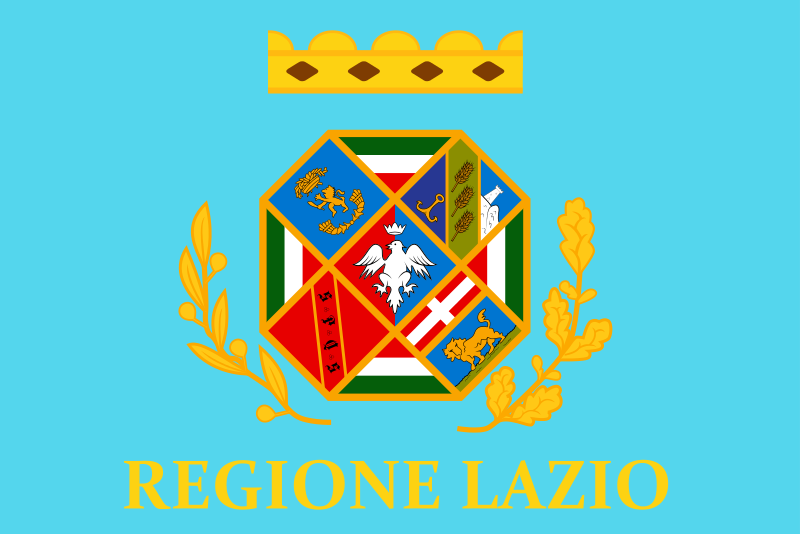 Lazio
Lazio
 Rom
Rom
 Olympische Sommerspiele
Olympische Sommerspiele
 Olympische Sommerspiele 1960
Olympische Sommerspiele 1960
 Seidenstraße
Seidenstraße

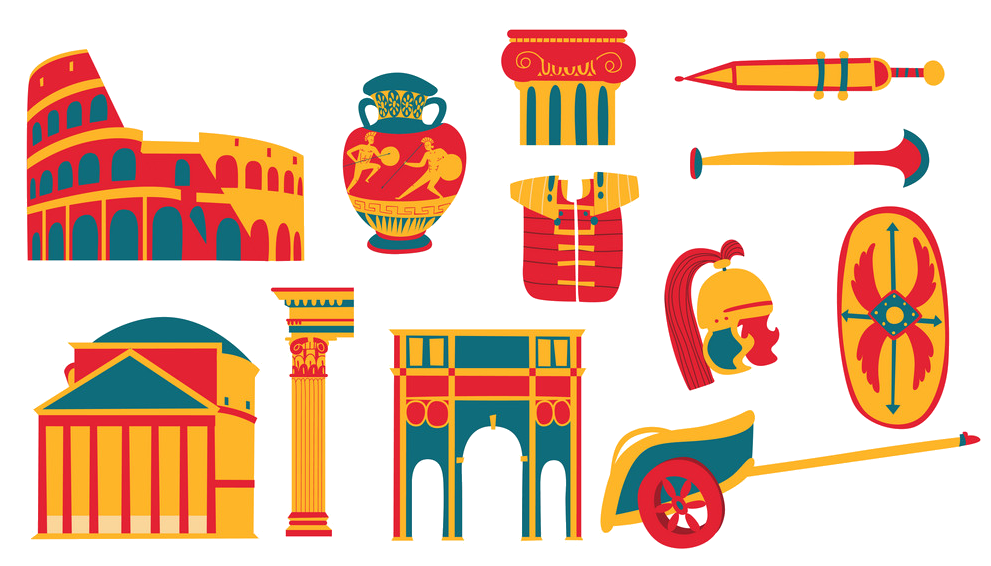 Von den Römern gegründete Städte
Von den Römern gegründete Städte

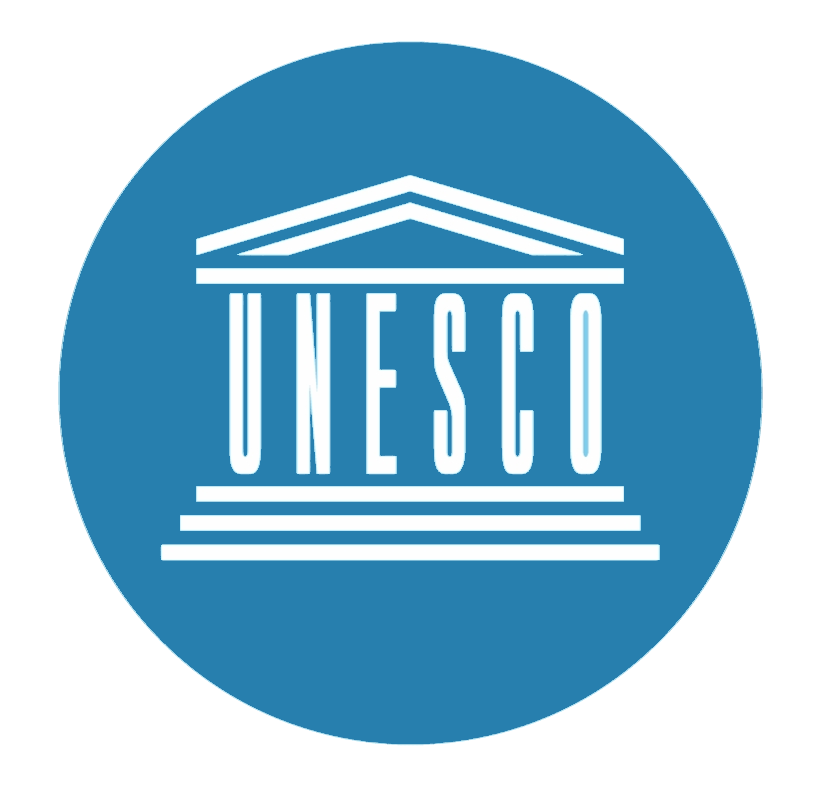 Weltkulturerbe
Weltkulturerbe
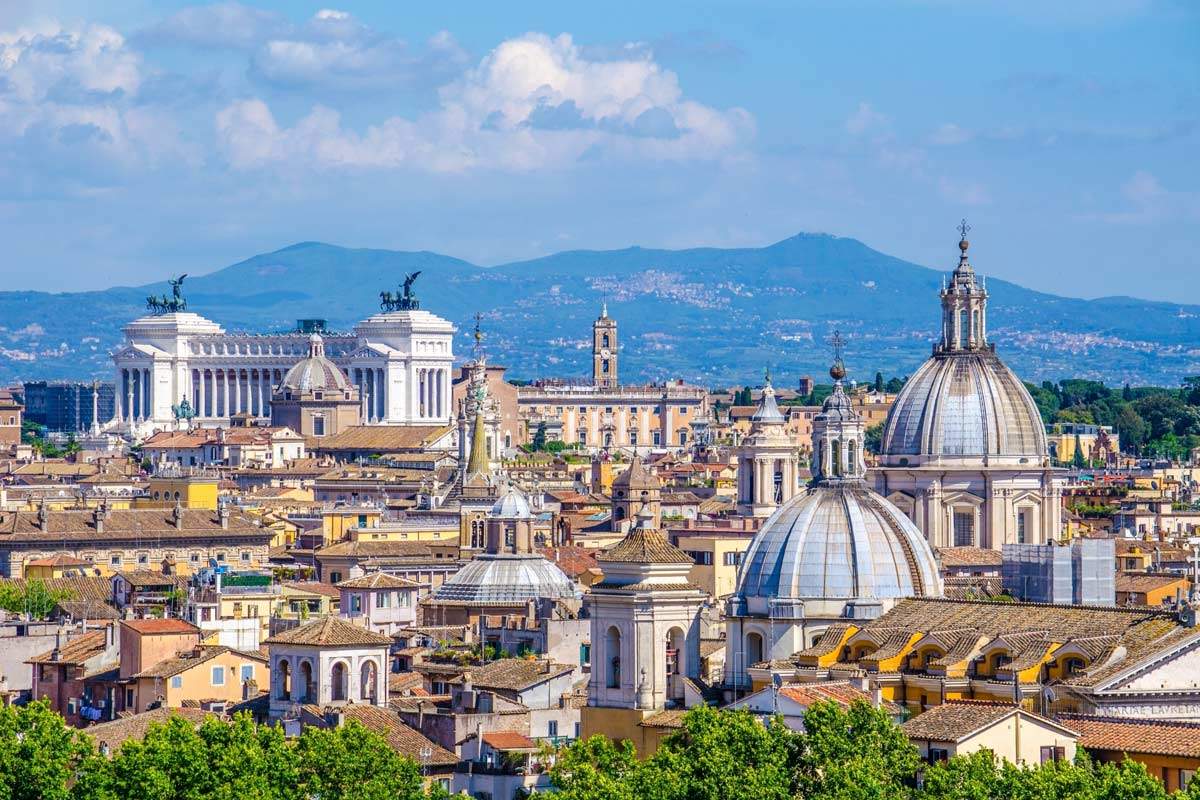
罗马(意大利语:Roma)是意大利首都及全国政治、经济、文化和交通中心,是世界著名的历史文化名城,古罗马文明的发祥地,因建城历史悠久并保存大量古迹而被昵称为“永恒之城”[1][2]。其位于意大利半岛中西部,台伯河下游平原地的七座小山丘上,市中心面积有1200多平方公里。罗马同时是全世界天主教会的中枢,拥有700多座教堂与修道院、7所天主教大学,市内的梵蒂冈城是罗马主教即天主教会教宗及圣座的驻地。罗马与佛罗伦萨同为意大利文艺复兴中心[3],现今仍保存有相当丰富的文艺复兴与巴洛克风貌;1980年,罗马的历史城区被列为世界文化遗产[4]。
Rom (lateinisch Rōma; italienisch Roma [ˈroːma]), amtlich Roma Capitale, ist die Hauptstadt Italiens.[2] Mit etwa drei Millionen Einwohnern im Stadtgebiet bzw. rund vier Millionen Einwohnern in der Agglomeration ist sie die größte Stadt Italiens. Rom liegt in der Region Latium an den Ufern des Flusses Tiber.
Rom wurde erstmals im 1. Jahrhundert v. Chr. vom Dichter Tibull[3] Ewige Stadt genannt. Diese Bezeichnung, ursprünglich eine Antonomasie, wurde zu einem Ehrennamen für die Stadt wegen der Bedeutung in ihrer bis heute drei Jahrtausende umspannenden Geschichte.
Sie ist heute Verwaltungssitz der Region Latium und der Metropolitanstadt Rom, bis 2015 Provinz Rom. Innerhalb der Stadt bildet der unabhängige Staat der Vatikanstadt eine Enklave. Der Vatikan ist der Sitz des Papstes, das heißt des Bischofs von Rom und Oberhaupts der römisch-katholischen Kirche sowie des Heiligen Stuhls. Zudem ist Rom seit 1834 Sitz des Malteser-Ritterordens, der ein eigenständiges (jedoch nichtstaatliches) Völkerrechtssubjekt ist, sowie der UNO-Unterorganisationen FAO, IFAD und WFP.
Rom ist außerordentlich reich an bedeutenden Bauten und Museen und Ziel zahlreicher Touristen. Die Altstadt von Rom, der Petersdom und die Vatikanstadt wurden von der UNESCO im Jahr 1980 zum Weltkulturerbe erklärt.[4]
In einer Rangliste der Städte nach ihrer Lebensqualität belegte Rom im Jahre 2018 den 57. Platz unter 231 untersuchten Städten weltweit.[5]
ローマ(伊: Roma、羅: Roma)は、イタリアの首都。欧州有数の世界都市であり、ラツィオ州の州都、ローマ県のコムーネの一つで、ローマ県の県都でもある。英語とフランス語の表記は「Rome」。
イタリアの首都で政治、経済、文化の中心地である。当市に囲まれるようにローマ教皇の居住するバチカン市国があり、そこは全世界のカトリック教徒にとっての中心地で、現在は外国であるが歴史・宗教・文化的にはローマ市地域と密接な関わりがある。そして昔のローマの大国さを表した「ローマは一日にして成らず」という諺もある。また、領土を持たないマルタ騎士団の本部、マルタ宮殿がコンドッティ通り68にあり、治外法権が認められている。
2014年現在の人口は約286万人で、イタリアで最も人口が多い都市である。2010年の都市的地域の人口では271万人であり、世界128位である[4]。 かつてのローマ帝国の首都であったため西洋文明圏を代表する都市のひとつであり、カトリック教会の中枢であり、そしてまたその美しさから『永遠の都』と称される。
2014年、アメリカのシンクタンクが公表したビジネス、人材、文化、政治などを対象とした総合的な世界都市ランキングにおいて、世界第32位の都市と評価されており、イタリアの都市では第1位であった[5]。
観光都市としての側面もあり、2012年には7,800,000人の観光客が訪れた[6]。後述の「観光」、「聖地として」も参照。
Rome (Italian: Roma ![]() i[ˈroːma]; Latin: Roma [ˈroːma]) is the capital city of Italy and a special comune (named Comune di Roma Capitale). Rome also serves as the capital of the Lazio region. With 2,872,800 residents in 1,285 km2 (496.1 sq mi),[1] it is also the country's most populated comune. It is the fourth-most populous city in the European Union by population within city limits. It is the centre of the Metropolitan City of Rome, which has a population of 4.3 million residents.[2] Rome is located in the central-western portion of the Italian Peninsula, within Lazio (Latium), along the shores of the Tiber. The Vatican City is an independent country inside the city boundaries of Rome, the only existing example of a country within a city: for this reason Rome has been often defined as capital of two states.[3][4]
i[ˈroːma]; Latin: Roma [ˈroːma]) is the capital city of Italy and a special comune (named Comune di Roma Capitale). Rome also serves as the capital of the Lazio region. With 2,872,800 residents in 1,285 km2 (496.1 sq mi),[1] it is also the country's most populated comune. It is the fourth-most populous city in the European Union by population within city limits. It is the centre of the Metropolitan City of Rome, which has a population of 4.3 million residents.[2] Rome is located in the central-western portion of the Italian Peninsula, within Lazio (Latium), along the shores of the Tiber. The Vatican City is an independent country inside the city boundaries of Rome, the only existing example of a country within a city: for this reason Rome has been often defined as capital of two states.[3][4]
Rome's history spans 28 centuries. While Roman mythology dates the founding of Rome at around 753 BC, the site has been inhabited for much longer, making it one of the oldest continuously occupied sites in Europe.[5] The city's early population originated from a mix of Latins, Etruscans, and Sabines. Eventually, the city successively became the capital of the Roman Kingdom, the Roman Republic and the Roman Empire, and is regarded as the birthplace of Western civilisation and by some as the first ever metropolis.[6] It was first called The Eternal City (Latin: Urbs Aeterna; Italian: La Città Eterna) by the Roman poet Tibullus in the 1st century BC, and the expression was also taken up by Ovid, Virgil, and Livy.[7][8] Rome is also called the "Caput Mundi" (Capital of the World). After the fall of the Western Empire, which marked the beginning of the Middle Ages, Rome slowly fell under the political control of the Papacy, which had settled in the city since the 1st century AD, until in the 8th century it became the capital of the Papal States, which lasted until 1870. Beginning with the Renaissance, almost all the popes since Nicholas V (1447–1455) pursued over four hundred years a coherent architectural and urban programme aimed at making the city the artistic and cultural centre of the world.[9] In this way, Rome became first one of the major centres of the Italian Renaissance,[10] and then the birthplace of both the Baroque style and Neoclassicism. Famous artists, painters, sculptors and architects made Rome the centre of their activity, creating masterpieces throughout the city. In 1871, Rome became the capital of the Kingdom of Italy, which, in 1946, became the Italian Republic.
Rome has the status of a global city.[11][12][13] In 2016, Rome ranked as the 14th-most-visited city in the world, 3rd most visited in the European Union, and the most popular tourist attraction in Italy.[14] Its historic centre is listed by UNESCO as a World Heritage Site.[15] Monuments and museums such as the Vatican Museums and the Colosseum are among the world's most visited tourist destinations with both locations receiving millions of tourists a year, and the city hosted the 1960 Summer Olympics. Rome is the seat of several specialized agencies of the United Nations, such as the Food and Agriculture Organization (FAO), the World Food Programme (WFP) and the International Fund for Agricultural Development (IFAD). The city hosts the headquarters of many international business companies, such as Eni, Enel, TIM, Leonardo S.p.A., and national and international banks such as Unicredit and BNL. Its business district, called EUR, is the base of many companies involved in the oil industry, the pharmaceutical industry, and financial services. Rome is also an important fashion and design centre thanks to renowned international brands centered in the city. Rome's Cinecittà Studios have been the set of many Academy Award–winning movies.
Roma (AFI: /ˈroma/[5], ) è la capitale della Repubblica Italiana, nonché capoluogo dell'omonima città metropolitana e della regione Lazio. La città è dotata di un ordinamento amministrativo speciale, denominato Roma Capitale, disciplinato da una legge dello Stato.[6]
Con 2 869 322 abitanti è il comune più popoloso d'Italia e il quarto dell'Unione europea,[3] mentre con 1 287,36 km² è il comune più esteso d'Italia e la quinta città più estesa d'Europa dopo Mosca, Istanbul, Londra e San Pietroburgo. È inoltre la città europea con la maggiore superficie di aree verdi[7].
Fondata secondo la tradizione il 21 aprile del 753 a.C. (sebbene scavi recenti nel Lapis Niger farebbero risalire la fondazione a 2 secoli prima[8][9]), nel corso dei suoi tre millenni di storia è stata la prima metropoli dell'umanità,[10] cuore pulsante di una delle più importanti civiltà antiche, che influenzò la società, la cultura, la lingua, la letteratura, l'arte, l'architettura, la filosofia, la religione, il diritto e i costumi dei secoli successivi. Luogo di origine della lingua latina, fu capitale dell'Impero romano che estendeva il suo dominio su tutto il bacino del Mediterraneo e gran parte dell'Europa, dello Stato Pontificio, sottoposto al potere temporale dei papi e del Regno d'Italia (dal 1871 al 1946). Per antonomasia, è definita l'Urbe, Caput Mundi e Città eterna.
Il suo centro storico, delimitato dal perimetro delle mura aureliane, sovrapposizione di testimonianze di quasi tre millenni è espressione del patrimonio storico, artistico e culturale del mondo occidentale europeo[11] e, nel 1980, insieme alle proprietà extraterritoriali della Santa Sede nella città, è stato inserito nella lista dei Patrimoni dell'umanità dell'UNESCO, provvedimento esteso nel 1990 ai territori compresi all'interno delle mura gianicolensi, edificate per volere di papa Urbano VIII.[12][13]
Roma, cuore della cristianità cattolica, è l'unica città al mondo ad ospitare al proprio interno un intero Stato, l'enclave della Città del Vaticano:[14] per tale motivo è spesso definita capitale di due Stati.[15][16]
Rome (en italien : Roma, prononcé [ˈroˑma]) est la capitale de l'Italie depuis 1871. Située au centre-ouest de la péninsule Italienne, près de la mer Tyrrhénienne, elle est également la capitale de la région du Latium, et fut celle de l'Empire romain durant 357 ans. En 2016, elle compte 2 877 215 habitants établis sur 1 285 km2, ce qui fait d'elle la commune la plus peuplée d'Italie et la troisième plus étendue d'Europe après Moscou et Londres1. Son aire urbaine recense 4 356 403 habitants en 20162,3. Elle présente en outre la particularité de contenir un État enclavé dans son territoire : la cité-État du Vatican (Stato della Città del Vaticano), dont le pape est le souverain. C'est le seul exemple existant d'un État à l'intérieur d'une ville.
L'histoire de Rome s'étend sur plus de vingt-huit siècles, depuis sa fondation mythique par Romulus en 753 av. J.-C. jusqu'à son rôle actuel de capitale de la république italienne. Second berceau de la civilisation occidentale après Athènes, la ville fut successivement le centre de la monarchie romaine, de la république romaine (509 av. J.-C. – 27 av. J.-C.), puis de l'Empire romain (27 av. J.-C. – 330). Durant cette période, où nait la célèbre expression proverbiale « tous les chemins mènent à Rome », la ville aurait compté entre un et deux millions d'habitants et domine l'Europe, l'Afrique du Nord et le Moyen-Orient tant militairement que culturellement, diffusant dans ces territoires la langue latine, ses arts et techniques ainsi que la religion chrétienne. Depuis le Ier siècle elle abrite le siège de l'Église catholique romaine, au sein des États pontificaux (752-1870) puis de la Cité du Vatican.
Considérablement agrandie par de grands travaux sous Jules César et surtout sous Auguste, la ville est partiellement détruite lors du Grand incendie de Rome - le Circus Maximus notamment. À partir du XVe siècle, presque tous les papes depuis Nicolas V (1447-1455) perpétuent la tradition de l'architecture romaine et ambitionnent de faire de Rome le principal centre culturel et artistique de l'Occident. La ville devient l'un des foyers de la Renaissance italienne, avec Florence et Venise, et donne naissance au style baroque - dont témoigne encore son centre historique, classé par l'UNESCO comme site du patrimoine mondial4. Des artistes comme Michel-Ange, Raphaël ou Le Bernin s'y installent et produisent des œuvres telles que la basilique Saint-Pierre, la chapelle Sixtine, la fontaine de Trevi, le Capitole ou les Chambres de Raphaël. Au XIXe siècle, Rome est le symbole de l'unité italienne et devient la capitale du Royaume d'Italie, puis de la République après la Seconde Guerre mondiale.
Ville globale, Rome est la troisième destination touristique la plus visitée d'Europe derrière Londres et Paris5. La Ville Éternelle est l'une des plus belles villes du monde, et fréquentée par les touristes depuis le XVIIIe siècle. Le siège de la papauté et le pèlerinage de Rome en font un lieu éminent pour les chrétiens du monde entier depuis des siècles. Les musées du Vatican et le Colisée sont parmi les sites les plus fréquentés. Rome est aussi l'un des plus grands sites archéologiques du monde, et compte également de nombreux ponts et fontaines, 900 églises, ainsi qu'un grand nombre de musées et d'universités. Outre le tourisme, l'économie de la « Ville Éternelle » est également orientée vers les nouvelles technologies, les médias et les télécommunications depuis les années 2000. Bâtie sur sept collines, la ville se situe près de l'embouchure du Tibre et est divisée en vingt-deux rioni. Rome a aussi organisé les Jeux olympiques d'été en 1960. Rome n'est jumelée qu'avec une seule autre ville, Paris, ce qui est vrai dans l'autre sens, avec ce slogan : « Seul Paris est digne de Rome, seule Rome est digne de Paris ».
Roma es una ciudad italiana de 2 877 215 habitantes,23 capital de la región del Lacio y de Italia. Es el municipio más poblado de Italia y es la cuarta ciudad más poblada de la Unión Europea.4 Por antonomasia se la conoce desde fines de la Antigüedad como la Urbe. También es llamada "La Ciudad Eterna" (en italiano: Città Eterna).
En el transcurso de su historia, que abarca tres milenios, llegó a extender sus dominios sobre toda la cuenca del Mediterráneo y gran parte de Europa. Como capital del Imperio romano, se constituyó en una de las primeras grandes metrópolis de la humanidad, centro de una de las civilizaciones antiguas más importantes. Influyó en la sociedad, la cultura, la lengua, la literatura, el arte, la arquitectura, la filosofía, la religión, el derecho y la moral de los siglos sucesivos.
Es la ciudad con la más alta concentración de bienes históricos y arquitectónicos del mundo;5 su centro histórico delimitado por el perímetro que marcan las murallas aurelianas, superposición de huellas de tres milenios, es la expresión del patrimonio histórico, artístico y cultural del mundo occidental europeo.6 En 1980, junto a las propiedades extraterritoriales de la Santa Sede que se encuentran en la ciudad y la Basílica de San Pablo Extramuros, fue incluida en la lista del Patrimonio de la Humanidad de la Unesco.78
Roma es el corazón geográfico de la religión católica y destino de peregrinación (vías romeas) y también la única ciudad del mundo que tiene en su interior un Estado extranjero: el enclave de la Ciudad del Vaticano, que se encuentra bajo el poder temporal del papa.9 Por tal motivo se le ha conocido también como la capital de dos Estados.
Рим (итал. Roma [ˈroːma]) — столица и крупнейший город Италии. Административный центр области Лацио и провинции Рим. Расположен на реке Тибр.
Рим — один из старейших городов мира, древняя столица Римской империи. Ещё в Античности (III век н. э.) Рим стали часто называть Вечным (лат. Roma Aeterna). Одним из первых так назвал Рим римский поэт Альбий Тибулл (I век до н. э.) в своей второй элегии. Представления о «вечности» Рима во многом сохранились и после падения древнеримской цивилизации, принеся соответствующий эпитет в современные языки.
Также Рим называют «городом на семи холмах». Первоначально поселения располагались на холме Палатине, впоследствии были заселены соседние холмы: Капитолий и Квиринал. Несколько позже поселения появились на последних четырёх холмах (Целие, Авентине, Эсквилине и Виминале).

Olympische Spiele Bronze London 2012 2,00 m Gold Rio de Janeiro 2016 1,97 m Weltmeisterschaften Bronze Moskau 2013 1,97 m Hallenweltmeisterschaften Silber Doha 2010 1,98 m Silber Portland 2016 1,96 m Bronze Moskau 2006 1,98 m Bronze Sopot 2014 2,00 m EAA Europameisterschaften Gold Helsinki 2012 1,97 m Gold Zürich 2014 2,01 m Gold Amsterdam 2016 1,98 m EAA Halleneuropameisterschaften Gold Göteborg 2013 1,99 m Silber Madrid 2005 1,99 m Silber Turin 2009 1,99 m Silber Belgrad 2017 1,94 m Bronze Birmingham 2007 1,96 m Mittelmeerspiele Gold Almería 2005 1,95 m EAA U23-Europameisterschaften Gold Amsterdam 2001 1,87 m



St. Louis (ausgeschrieben Saint Louis) [ˌseɪntˈluːɪs] ist eine Stadt im US-Bundesstaat Missouri am westlichen Ufer des Mississippi. Sie hat 319.294 Einwohner (Volkszählung 2010).
In der Stadt befinden sich einige Hochschulen wie die Washington University, die Saint Louis University und die University of Missouri-St. Louis. Die Stadt war früher ein großer Eisenbahnknoten; der Personenverkehr spielt heute allerdings keine Rolle mehr. In East St. Louis liegen am östlichen Mississippi-Ufer im Bundesstaat Illinois zwei Rangierbahnhöfe.
Saint Louis trägt auch die Spitznamen The Gateway City und Mound City sowie die durch den einheimischen Rapper Nelly bekannt gewordenen Szenebezeichnungen The Lou und Nellyville.
2006 führte St. Louis die Liste der gefährlichsten Städte der Vereinigten Staaten an, weil man nur die Zahlen für die Innenstadt und nicht auch die Zahlen für die gesamte Metro Area berücksichtigt hatte.[2] Von 2014 bis 2016[3] führte St. Louis erneut die Liste der Städte mit den meisten Tötungsdelikten in den USA an. Im weltweiten Vergleich liegt St. Louis damit auf Platz 15 (2015). In der Statistik waren noch Baltimore, Detroit und New Orleans als gefährlichste Städte der Vereinigten Staaten angegeben.[4]
In der Metropolregion Greater St. Louis leben insgesamt 2,8 Millionen Einwohner. Die Region ist somit das achtzehntgrößte Ballungsgebiet in den Vereinigten Staaten (Stand 2010). Das Stadtgebiet gehört jedoch nicht zum St. Louis County, in dem 998.954 Menschen wohnen.
圣路易(英语:St. Louis),也译“圣藟”,是美国密苏里州唯一的独立市,也是该州第二大城市(第一大城市为堪萨斯城)。市内人口为308,626人,为美国按人口排名第58大城市。
圣路易位于密苏里河和密西西比河汇合处,是美国中西部交通枢纽。曾于1904年举办过第三届夏季奥林匹克运动会。
圣路易市与1764年由法国探险家兼皮草商人皮埃尔·拉克利德(Pierre Laclède)和奥古斯特·舒托(Auguste Chouteau)建立,并以中世纪是法王路易九世的封号圣路易命名。早年居民为法国殖民者,18世纪中叶七年战争后西班牙人开始增多。由于法国在战争中失败,密西西比河以东的殖民地由大英帝国占领。如今圣路易市所在的区被称为西班牙路易斯安那,仍然保留在法国势力范围内。
 *Leichtathletik
*Leichtathletik
 Diskuswurf/Discus throw
Diskuswurf/Discus throw
 Leichtathletik-Weltmeisterschaften
Leichtathletik-Weltmeisterschaften
 2017 London
2017 London
 Leichtathletik-Weltmeisterschaften
Leichtathletik-Weltmeisterschaften
 2013 Moskau
2013 Moskau
 Olympische Sommerspiele
Olympische Sommerspiele
 2012
2012
 Olympische Sommerspiele
Olympische Sommerspiele
 2016
2016



 FIFA Fussball-Weltmeisterschaft 2002
FIFA Fussball-Weltmeisterschaft 2002

 Geschichte
Geschichte

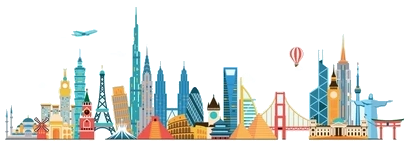 Internationale Städte
Internationale Städte
 *World Design Capital
*World Design Capital

 Internationale Städte
Internationale Städte
 ***Globale wirtschaftliche Wettbewerbsfähigkeit der Städte
***Globale wirtschaftliche Wettbewerbsfähigkeit der Städte
 League of Legends
League of Legends
 League of Legends World Championship
League of Legends World Championship
 Olympische Sommerspiele
Olympische Sommerspiele
 Republik Korea
Republik Korea
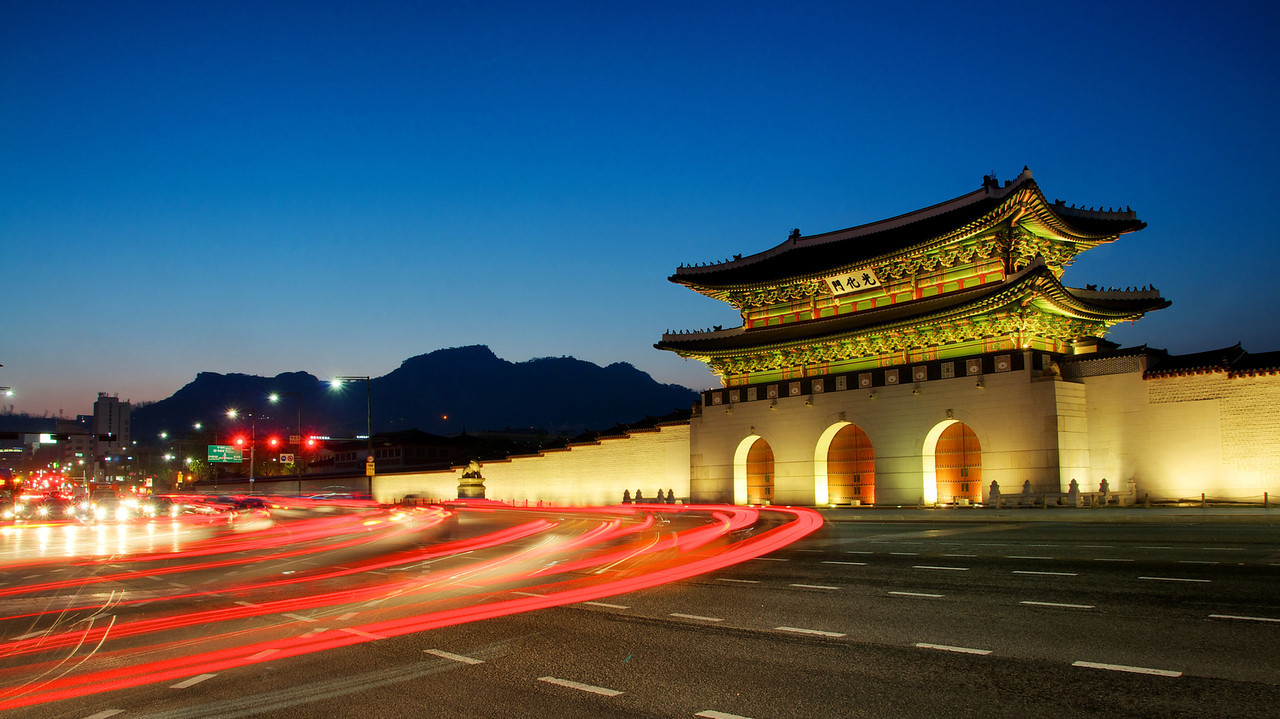
首尔(朝鲜语:서울 Seoul */? 韩语发音 帮助·信息,官方英语拼法:Seoul,国际音标:[sʌ.ul]),正式名称为首尔特别市。旧中文译名为汉城,2005年更改译名为首尔,是大韩民国的首都和经济、科技、文化中心,亦是朝鲜半岛人口最多的城市。
韩语发音 帮助·信息,官方英语拼法:Seoul,国际音标:[sʌ.ul]),正式名称为首尔特别市。旧中文译名为汉城,2005年更改译名为首尔,是大韩民国的首都和经济、科技、文化中心,亦是朝鲜半岛人口最多的城市。
首尔市位于朝鲜半岛中部,韩国西北部的汉江流域。首尔的位置最早为传疑时代的真番国,公元前18年,朝鲜三国时期的百济首先定都于此地,之后成为高丽王朝的南京。1394年,朝鲜国王李成桂迁都汉阳并改为汉城。第二次世界大战之后至亚洲金融危机,汉城经济快速恢复和发展,一度创造了汉江奇迹,并出现了三星、现代等大型跨国公司。2005年1月,汉城市政府宣布中文译名更改为“首尔”。截至2017年,首尔市人口达1千万,而以首尔市为核心的韩国首都圈总人口达2,400万[8]。
首尔曾举办1986年亚洲运动会、1988年夏季奥林匹克运动会、2002年世界杯足球赛等国际体育赛事与2010年二十国集团峰会等国际会议,曾获选为2010年世界设计之都[9][10]。
首尔市历史悠久,境内有昌德宫、宗庙、朝鲜王陵等3处世界文化遗产以及崇礼门等重要古迹。
Seoul (kor. 서울, Aussprache: [sʌ.ul]  anhören?/i; siehe auch Namen Seouls) ist die Hauptstadt Südkoreas. Der amtliche koreanische Name lautet „Besondere Stadt Seoul“ (서울특별시, Seoul Teukbyeolsi). Diese Bezeichnung weist auf den Status als Hauptstadt und auf die verwaltungspolitische Gleichstellung gegenüber den Provinzen hin (siehe auch Verwaltungsgliederung Südkoreas).
anhören?/i; siehe auch Namen Seouls) ist die Hauptstadt Südkoreas. Der amtliche koreanische Name lautet „Besondere Stadt Seoul“ (서울특별시, Seoul Teukbyeolsi). Diese Bezeichnung weist auf den Status als Hauptstadt und auf die verwaltungspolitische Gleichstellung gegenüber den Provinzen hin (siehe auch Verwaltungsgliederung Südkoreas).
Bereits 18 v. Chr. bis 475 war Seoul die historische Hauptstadt des Königreichs Baekje. Von 1394 bis 1910 war sie die Hauptstadt der Reiche Joseon und Groß-Korea. Zur Hauptstadt Südkoreas wurde sie im Jahr 1945 erhoben. Auch Nordkoreas Verfassung sah Seoul als rechtmäßige Hauptstadt vor, bis eine Verfassungsänderung von 1972 Pjöngjang zur Hauptstadt der Volksrepublik erhob, wo die nordkoreanische Führung seit Ende des Zweiten Weltkrieges einen provisorischen Regierungssitz eingerichtet hatte.
Die Einwohnerzahl von Seoul beträgt 10 Millionen (2015).[2] Die Stadt ist das Zentrum der Metropolregion Sudogwon (수도권, 首都圈), in der etwa 25,4 Millionen Menschen (2015) leben.[1] Damit konzentriert sich etwa die Hälfte aller Südkoreaner in der Stadt Seoul und deren Satellitenstädten. Sudogwon gilt als einer der fünf größten Ballungsräume der Welt und auch als viertgrößter Wirtschaftsraum der Welt.
Neben ihrem Status als Hauptstadt und bevölkerungsreichste Stadt Koreas ist Seoul zudem das Finanz-, Kultur- und Bildungszentrum Südkoreas. Die Stadt richtete die Olympischen Sommerspiele 1988 aus und war einer der Austragungsorte der Fußball-Weltmeisterschaft 2002.
ソウル特別市(ソウルとくべつし、韓国語: 서울특별시、英語:Seoul、通称ソウル)は、大韓民国(通称韓国)の首都。かつての朝鮮王朝の首都「漢城府」である。日本統治時代の朝鮮では漢ではなく京を使い「京城府」と呼ばれた。
もとは京畿道に属したが、1946年に分離し「特別市」となる。韓国にはソウル特別市のほか、世宗特別自治市と6つの広域市が存在し、日本の政令指定都市に相当するといえるが、特別市・特別自治市・広域市とも行政道には所属せず、道と同等の広域自治体として運営されている(特別市・広域市の領域では区が基礎自治体となっている)。
朝鮮王朝500年の王都で、四神相応の思想によって建てられた。「ソウル」とは朝鮮語で「都、首都」を意味し、語源については新羅語で首都を意味する「徐羅伐(ソラボル、서라벌)」が由来という説が有力である。なお「ソウル」は、漢字表記(漢城・漢陽・京城・京都など)の変遷に関わらず、朝鮮民族はこの地を「ソウル」と呼んできたとも言われている。朝鮮王朝時代までは漢字で「京都」などと書いて朝鮮語で「ソウル」と読んでいたが、現代の韓国語では漢字の訓読が廃止されているためハングルのみで表記する(後述の「ソウルの中国語表記」も参照)。
ソウルの人口は韓国の経済発展に伴って急増を続け、1975年の680万人から1990年には1061万人にまで到達した。しかし翌年の1092万人をピークにその後は減少傾向が続いている。これはドーナツ化現象が進んだためと見られ、日本の東京が高度経済成長に伴って急速に拡大し、その後都心部の人口が減少していったことと状況が極めて良く似ていた。しかし地価の高騰や少子化・高齢化、雇用の悪化から、近隣の仁川市や京畿道を含めたソウル都市圏そのものも既に人口減少に転じている[2]。それでもなおソウル都市圏には韓国全国民のおよそ半分が在住し、日本同様に一極集中的な傾向が強い。2016年時点での近郊都市を含めた都市圏人口は約2350万人であり、世界屈指の規模の大都市圏を形成している[3]。
アメリカのシンクタンクが2017年に発表した総合的な世界都市ランキングにおいて、世界7位の都市と評価された[4]。また、日本の民間研究所が2017年に発表した「世界の都市総合力ランキング」では、世界6位と評価された[5]。
Seoul (/soʊl/, like soul; Korean: 서울 [sʰʌ.ul] ( listen); lit. "Capital"), officially the Seoul Special City, is the capital[9] and largest metropolis of South Korea.[10] With surrounding Incheon metropolis and Gyeonggi province, Seoul forms the heart of the Seoul Capital Area. Seoul is ranked as the fourth largest metropolitan economy in the world and is larger than London and Paris.[11][12]
listen); lit. "Capital"), officially the Seoul Special City, is the capital[9] and largest metropolis of South Korea.[10] With surrounding Incheon metropolis and Gyeonggi province, Seoul forms the heart of the Seoul Capital Area. Seoul is ranked as the fourth largest metropolitan economy in the world and is larger than London and Paris.[11][12]
Strategically situated on the Han River, Seoul's history stretches back over two thousand years, when it was founded in 18 BCE by the people of Baekje, one of the Three Kingdoms of Korea. The city was later designated the capital of Korea under the Joseon dynasty. Seoul is surrounded by a mountainous and hilly landscape, with Bukhan Mountain located on the northern edge of the city. As with its long history, the Seoul Capital Area contains five UNESCO World Heritage Sites: Changdeok Palace, Hwaseong Fortress, Jongmyo Shrine, Namhansanseong and the Royal Tombs of the Joseon Dynasty.[13] More recently, Seoul has been a major site of modern architectural construction – major modern landmarks include the N Seoul Tower, the 63 Building, the Lotte World Tower, the Dongdaemun Design Plaza, Lotte World, Trade Tower, COEX, and the Parc1 Tower. Seoul was named the 2010 World Design Capital. As the birthplace of K-pop and the Korean Wave, Seoul received over 10 million international visitors in 2014,[14] making it the world's 9th most visited city and 4th largest earner in tourism.[15]
Today, Seoul is considered a leading and rising global city, resulting from the South Korean economic boom - commonly referred to as the Miracle on the Han River - which transformed it into the world's 7th largest metropolitan economy with a GDP of US$635.4 billion[16] in 2014 after Tokyo, New York City and Los Angeles. International visitors generally reach Seoul via AREX from the Incheon International Airport, notable for having been rated the best airport for nine consecutive years (2005–2013) by the Airports Council International. In 2015, it was rated Asia's most livable city with the second highest quality of life globally by Arcadis, with the GDP per capita (PPP) in Seoul being $39,786. Inhabitants of Seoul are faced with a high cost of living, for which the city was ranked 6th globally in 2017.[17][18][19] Seoul is also an extremely expensive real estate market, ranked 5th in the world for the price of apartments in the downtown center.[20] With major technology hubs centered in Gangnam and Digital Media City,[21] the Seoul Capital Area is home to the headquarters of 15 Fortune Global 500 companies, including Samsung,[22] LG, and Hyundai. Ranked sixth in the Global Power City Index and Global Financial Centres Index, the metropolis exerts a major influence in global affairs as one of the five leading hosts of global conferences.[23] Seoul has hosted the 1986 Asian Games, 1988 Summer Olympics, 2002 FIFA World Cup, and more recently the 2010 G-20 Seoul summit.
Séoul /se.ul/3 (en coréen : 서울 ; romanisation révisée : Seoul /sʌ.ul/4 Écouter) ; officiellement Ville spéciale de Séoul (en hangeul : 서울특별시 et en hanja : 서울特別市 Écouter) est la capitale et la plus grande ville de la Corée du Sud. Située sur le fleuve Han, au nord-ouest du pays, elle compte une population d'environ dix millions d'habitants intra-muros et 25 620 000 dans son aire urbaine (qui inclut notamment Incheon)5, ce qui fait d'elle la troisième mégapole la plus peuplée au monde après Tokyo et Mexico, et juste devant New York. En outre, la ville est le lieu de résidence de près de la moitié de la population sud-coréenne. La zone démilitarisée (DMZ) est, quant à elle, à environ 45 kilomètres du centre-ville.
Fondée il y a deux mille ans par le royaume Baekje, l'un des Trois Royaumes de Corée, Séoul est pendant plus de cinq cents ans la capitale du royaume de Joseon. À la fin du XIXe siècle, rompant avec une longue tradition d'isolement, Séoul s'ouvre aux étrangers et notamment aux États-Unis : elle est la première ville d'Asie de l'Est à avoir l'électricité, l'eau courante, le téléphone et un réseau de tramway. Occupée par le Japon de 1910 à 1945 et rebaptisée Gyeongseong, la ville devient la capitale de la République de Corée lors de sa proclamation en 1948. Elle sera gravement endommagée lors des conflits de la Guerre de Corée, dont la bataille de Séoul fut l'un des évènements majeurs : le palais de Gyeongbokgung et sa grande porte sont notamment incendiés. Reconstruite dans les années 1960 et 1970 avec l'aide des États-Unis, elle connaît une forte industrialisation et devient le visage d'une Corée du Sud en voie de modernisation. Depuis les années 1990, Séoul a vu sa population croître de manière importante, notamment grâce à l'afflux de migrants d'Asie du Sud-Est.
Siège des plus grandes entreprises coréennes (les chaebol), dont Samsung, LG et Hyundai, Séoul est considérée comme une ville globale. Son niveau de vie très élevé et son PIB - le quatrième au monde pour une aire urbaine après Tokyo, New York et Los Angeles - en font l'un des principaux centres économiques au monde. Le quartier branché de Gangnam et la Digital Media City concentrent des entreprises dans les nouvelles technologies. La ville compte de nombreux bâtiments à l'architecture futuriste, comme le Dongdaemun Design Plaza et la Lotte Super Tower 123, qui atteint les 555 mètres de hauteur en 2016 et dépasse la N Seoul Tower. Symbole de son rayonnement, Séoul a organisé plusieurs grands évènements internationaux, dont les Jeux asiatiques de 1986, les Jeux olympiques d'été de 1988, la Coupe du monde de football de 2002 et le Sommet du G20 de novembre 2010.
Importante destination touristique, Séoul compte trois monuments classés au patrimoine mondial de l'UNESCO : le palais de Changdeokgung, le sanctuaire de Jongmyo et plusieurs tombes royales de la dynastie Joseon. En raison de sa forte densité de population, plus de trois millions de véhicules y sont comptabilisés, ce qui entraîne des embouteillages quotidiens, même au-delà de minuit. Enfin, en tant que cœur culturel du pays, Séoul est le berceau de la K-pop et de la diffusion de la culture coréenne à travers le monde (hallyu).
Seul[2] (anche Seoul,[3][4][5] pronuncia: Soul; in coreano 서울특별시, Seoul Teukbyeolsi ascolta[?·info]; vecchi nomi Gyeongseong, Hanyang, come nome breve 서울, Seoul, pronuncia /sʌ.ul/) è la capitale della Corea del Sud.
Situata nel nord-ovest del Paese, poco più a sud della zona demilitarizzata coreana, sul fiume Han, la città è il centro politico, culturale, sociale ed economico più importante dello Stato. Sede delle multinazionali che operano nel Paese, come capitale della Corea del Sud rappresenta una delle più forti economie mondiali ed è il simbolo visibile di quello che viene chiamato il "miracolo del fiume Han", riferito agli enormi progressi nel campo dell'economia sudcoreana negli ultimi decenni.
Secondo i dati del servizio demografico ONU[6] l'area urbana di Seul contava 9,7 milioni di abitanti nel 2007, occupando il ventiduesimo posto nella classifica delle città più popolose. I dati cambiano notevolmente se si prendono in considerazione l'area metropolitana di Seul, tra cui il maggiore porto, Incheon, e il più grande centro residenziale, Seongnam, con i quali l'agglomerato urbano arriva fino a venticinque milioni di abitanti. L'alta densità abitativa le ha permesso di diventare una delle città più "cablate" dell'economia informatica globale. Il traffico intenso e l'inquinamento industriale hanno spinto il governo metropolitano a prendere severi provvedimenti di natura ecologica, soprattutto per quanto riguarda la lotta contro lo smog e l'inquinamento idrico. A seguito di tali misure la situazione è migliorata, ma resta problematica.
Seúl (hangul: 서울, RR: Seoul, MR: Sŏul)?, pronunciado: [sʌ.ul](![]() escuchar), oficialmente Ciudad Especial de Seúl (hangul: 서울특별시, RR: Seoul-teukbyeolsi, MR: Sŏul-t'ŭkpyŏlshi)?, es la capital de Corea del Sur desde la creación de esta república en 1948, la capital histórica de Corea desde hace más de 600 años y la ciudad más poblada de la península de Corea.
escuchar), oficialmente Ciudad Especial de Seúl (hangul: 서울특별시, RR: Seoul-teukbyeolsi, MR: Sŏul-t'ŭkpyŏlshi)?, es la capital de Corea del Sur desde la creación de esta república en 1948, la capital histórica de Corea desde hace más de 600 años y la ciudad más poblada de la península de Corea.
Situada en el noroeste del país, a unos 50 kilómetros de la zona desmilitarizada que separa las dos Coreas, forma una unidad administrativa propia dentro del Estado. Está atravesada por el río Han.
Hoy en día, Seúl es considerada una ciudad global, resultado de una explosión de crecimiento económico conocido como el Milagro del río Han, que transformó las cenizas producidas por los bombardeos de la Guerra de Corea en la cuarta economía metropolitana del mundo con un PIB de 773 900 millones de dólares estadounidenses, solo por detrás de Tokio, Nueva York y Los Ángeles.
Con unos 10 millones de habitantes en la ciudad propiamente dicha, y 24,5 millones en toda el área metropolitana, que incluye el puerto de Incheon y la provincia de Gyeonggi, es la cuarta área metropolitana más grande del mundo.
En 2012, las Naciones Unidas situaron la calidad de vida de Seúl por encima de ciudades como Nueva York, Londres o Melbourne, y por debajo de Tokio o París.
Сеу́л (кор. 서울 [sʰʌ.ul], Соуль — букв.: «столица») — город, столица Республики Корея. Образует единственный в стране город особого подчинения, разделённый на 25 самоуправляемых районов. Официальное название города — Город особого подчинения Сеул (кор. 서울특별시 Соуль-тхыкпёльси)
Население — 10,1 млн человек (2015), или 19,5 % населения страны. Образует агломерацию Сеул-Инчхон с населением 23,5 млн человек (2015), четвёртую по величине в мире. Расположен на северо-западе Республики Корея вблизи Жёлтого моря, на равнине в окружении гор, на берегах реки Ханган, в 24 км от границы с КНДР.
Главный политический, экономический и культурный центр Республики Корея. Один из ведущих финансовых центров Восточной Азии.
С 1394 года под названием Ханян — столица Кореи, с 1948 года под названием Сеул — столица Республики Корея. Во время Корейской войны город был сильно разрушен. Сохранились остатки крепостной стены с воротами, восстановлен дворцовый комплекс Кёнбоккун XIV века. Имеются объекты Всемирного наследия ЮНЕСКО.
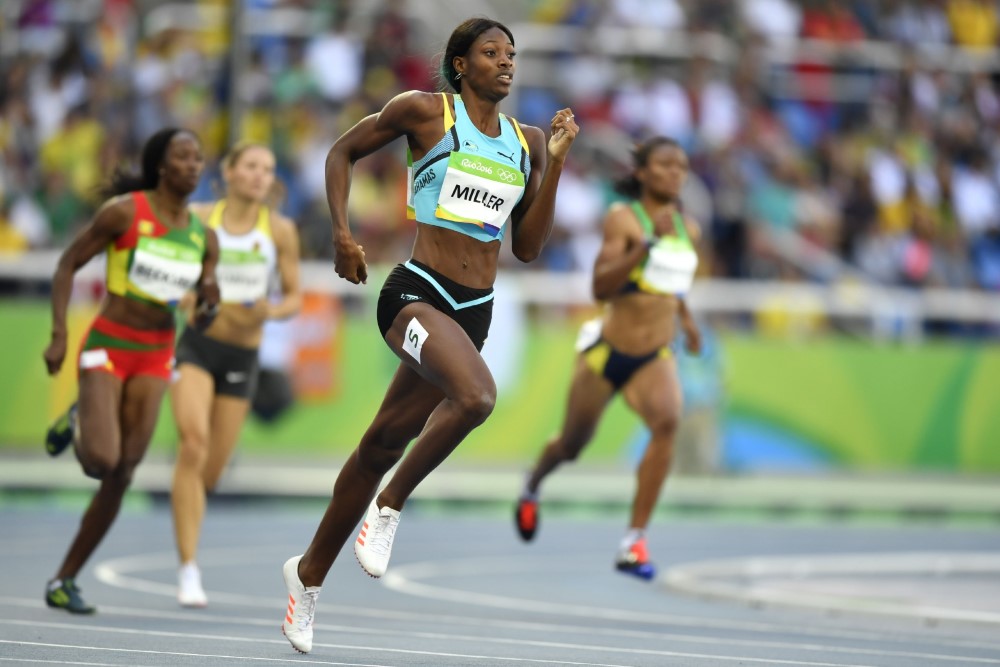
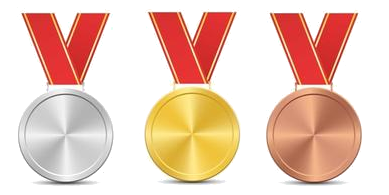 Sport
Sport
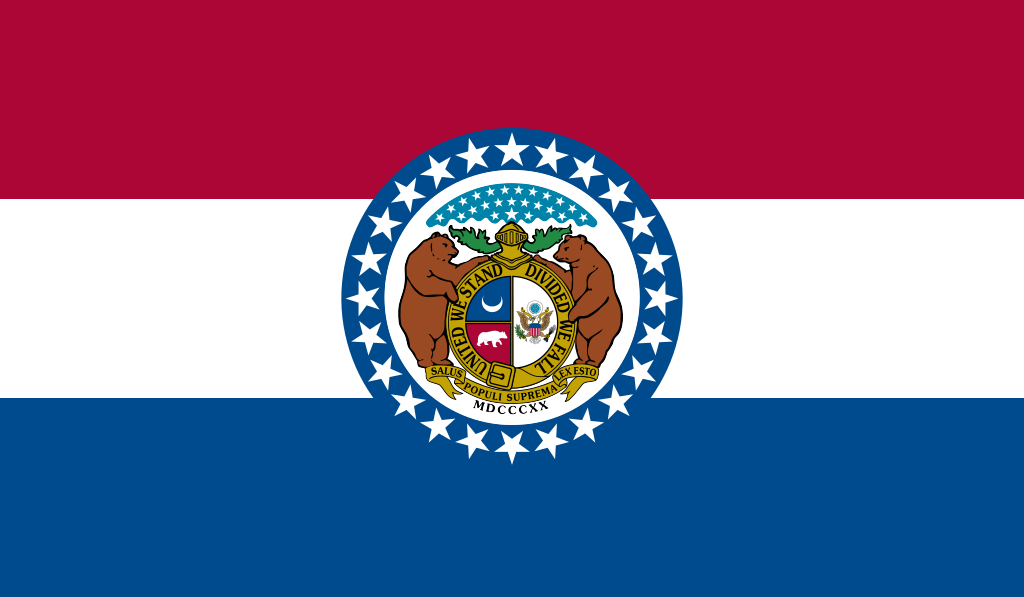 Missouri-MO
Missouri-MO